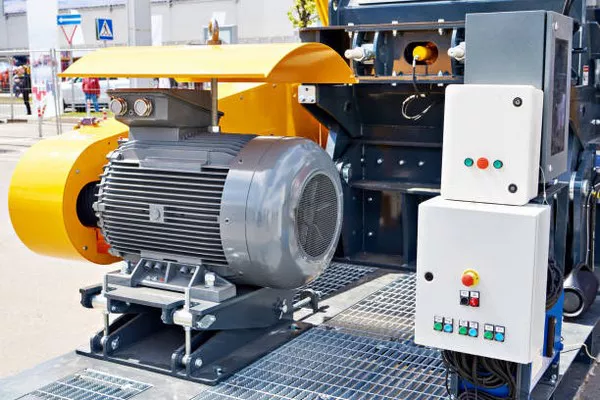In the realm of home comfort, few things rival the importance of a reliable air conditioning system, especially during scorching summers or in regions with hot climates. However, power outages are an inevitable reality that can disrupt the operation of AC units, leaving occupants uncomfortable and potentially posing health risks in extreme temperatures. To mitigate such situations, it’s crucial to have a backup power source, typically in the form of a generator. But determining the right size of generator to power your AC unit efficiently requires careful consideration of several factors. In this guide, we’ll delve into the intricacies of generator sizing for air conditioning systems, covering everything from understanding power requirements to installation and maintenance tips.
Understanding AC Power Requirements
Before diving into generator sizing, it’s essential to understand the power requirements of your air conditioning unit. AC systems typically have two power ratings: starting wattage and running wattage. Starting wattage refers to the power needed to start the compressor and other components, which is typically higher than the running wattage required to keep the unit operational.
Determining Starting and Running Wattage
To determine the starting and running wattage of your AC unit, refer to its specifications provided by the manufacturer. These specifications should include the rated voltage, current draw, and power consumption in watts. If this information is not readily available, consult with a qualified HVAC technician who can help you accurately assess the power requirements.
Calculating Total Wattage for Generator Sizing
Once you have the starting and running wattage of your AC unit, you’ll need to calculate the total wattage required to power it. This involves considering any additional loads that will be connected to the generator, such as lights, appliances, or other electronics. Add up the wattage of all these devices to determine the total load that the generator must support.
Types of Generators: Portable vs. Standby
When it comes to generators, there are two primary types to consider: portable and standby generators. Portable generators are versatile and can be moved to different locations as needed, making them suitable for occasional use or emergencies. Standby generators, on the other hand, are permanently installed and automatically activate in the event of a power outage, providing uninterrupted power supply to essential circuits or the entire house.
Considerations for Portable Generators
If you opt for a portable generator to power your AC unit, ensure that it has sufficient wattage capacity to handle the starting and running loads of the AC system. Additionally, consider factors such as fuel type, runtime, noise levels, and safety features when selecting a portable generator.
Considerations for Standby Generators
For homeowners seeking a more permanent and seamless solution, standby generators offer the convenience of automatic operation and higher power capacities. When choosing a standby generator for your AC unit, consult with a licensed electrician to determine the appropriate size based on your specific power requirements and home’s electrical system.
Additional Factors to Consider
In addition to wattage capacity, there are several other factors to consider when sizing a generator for your AC unit. These include the altitude of your location, temperature fluctuations, power quality requirements, and any special considerations for sensitive electronic equipment.
Recommendations for Common AC Sizes
The size of your AC unit will play a significant role in determining the appropriate generator size. As a general guideline, here are recommendations for common AC sizes:
For small window or portable AC units (up to 5,000 BTU): A portable generator with a capacity of 1,000 to 2,000 watts should suffice.
For medium-sized central air conditioning systems (up to 3 tons): Consider a portable generator with a capacity of 3,000 to 5,000 watts or a standby generator with a capacity of 7 to 10 kilowatts.
For larger central air conditioning systems (over 3 tons): A standby generator with a capacity of 15 kilowatts or higher may be necessary to accommodate the higher starting loads.
These recommendations are approximate and may vary depending on the specific requirements of your AC unit and other connected loads.
Tips for Generator Installation and Maintenance
Proper installation and maintenance are essential for ensuring the reliable operation of your generator and AC system.
Follow these tips to maximize the performance and longevity of your equipment:
Hire a qualified electrician to install the generator and ensure compliance with local building codes and safety standards.
Regularly inspect and maintain the generator, including checking fluid levels, testing the battery, and cleaning or replacing air filters as needed.
Conduct periodic load tests to verify the generator’s ability to handle the connected loads, including the AC unit.
Keep spare parts, fuel, and necessary supplies on hand for emergencies, and have a backup plan in place for extended power outages.
See Also What Size Generator Needed To Run Central Air
Conclusion: Ensuring Reliable Power for Your AC
A properly sized generator is essential for ensuring uninterrupted comfort and safety during power outages, particularly for air conditioning systems in hot climates. By understanding the power requirements of your AC unit, considering factors such as generator type and capacity, and following installation and maintenance best practices, you can ensure reliable power supply for your AC system when you need it most. Whether you opt for a portable or standby generator, investing in the right equipment and proper upkeep will provide peace of mind and comfort for years to come.

